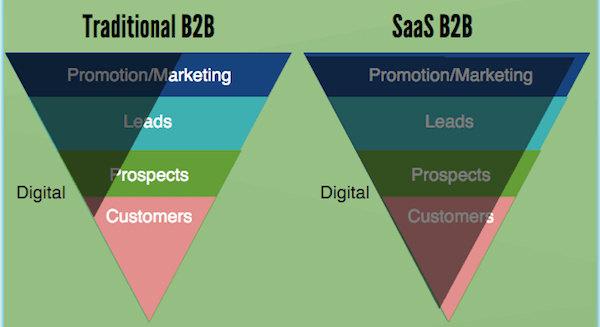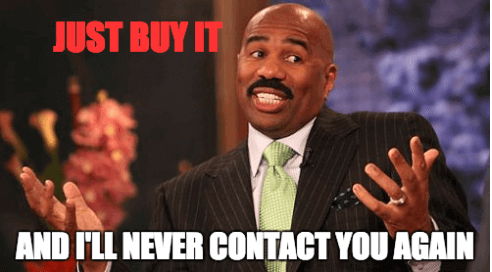I recently made a major career change and left my job as a B2B Solution Sales guy and consultant at a niche IT company to move to a B2B SaaS startup. That startup is Leadfeeder where I’m doing business development, growth hacking and customer acquisition.
I’ve made some striking sales and marketing observations after operating in these two sectors. I hope they give you some inspiration, whether you’re planning a career change or reflecting on both models after experiencing them yourself.
First to understand the difference between these two jobs, here’s a neat summary of how I experienced the change:

Now that you’ve got impression on practical differences, let me pinpoint some of my observations on sales & marketing in these two sectors.
1. Digital footprint in the sales & marketing funnel
Let’s take the sales funnel as an example. The funnel’s upper end represents your efforts to raise awareness of your company’s offering by any means. Eventually your marketing efforts convert to opportunities to sell (quality lead generation). This is when your salespeople take over.
Some percentage of sales leads convert to prospects, in other words those customers/cases where you are actually promising solutions to customers with a certain price and scope. Finally you close the deal and end up with a happy customer.
From my experience, the basic elements of the funnel don’t vary that much when you think of B2B Solution Sales and SaaS startup customer acquisition. What makes the difference is to what extent you digitize/automate your lead generation, convert leads to prospects and into deals. This is how the digital footprint looks at traditional B2B Solution Sales compared to SaaS B2B.

In B2B Solution Selling the digital revolution hasn’t taken off as it has in B2C or even B2B SaaS business. This means promotion and raising awareness still happens quite a lot with individuals going around and spreading the good news. This is something that is going to change radically during the coming years as customers’ and companies’ buying processes digitalize. In the future, customers will convert straight to prospects as soon as they have shortlisted you based on your digital presence.
However, in a B2B SaaS business the baseline seems to be: the more automatization the better. In other words, if a customer buys your product without ever hearing from him, that’s absolutely fine with you and you make it possible.
2. Lifetime value of customer is king!

In B2B business in general, companies are aiming to build long-lasting relationships with their customers. This has an effect on marketing (you can’t avoid hearing about account-based marketing these days) and sales. This is absolutely true in the two worlds I’m comparing here. If you keep your customer satisfied, he keeps buying from you (either if it’s renewal of recurring credit card purchasing or buying a new solution from you). Long-lasting relationships make your revenue steadier and life with your sales funnel easier as well, when you no longer need to feed your funnel’s upper end with tons of leads.
3. Different buyers need to be approached with different means
Remember the old classic “Crossing the chasm” by Geoffrey Moore?
He described the different stages of how to grow your business, the different kinds of stakeholders and how you should appeal to each of them.
Whether it’s B2B Solution Selling or SaaS customer acquisition, you still need to make sure your prospects see enough evidence before they have the confidence to buy from you. If you’re new to market, you first target early adopters (technology enthusiasts and visionaries) and make sure the evidence they require is available.
Maybe the most important thing I’ve learned relates, surprisingly, not to selling but to buying. I’ve always thought that selling process should always adapt to customer’s buying process. But what if the buying process doesn’t want to change and yet with digital tools selling could evolve a lot? Maybe this is the reason old-school B2B selling changes so slowly when both buying and selling parties stay in their trenches and keep doing things “as we’ve always done”. Luckily we’re seeing new selling philosophies (such as social selling) changing the game slowly.
If you’d like to make a career-change as well and come for us, check the open positions at Dealfront.
Get more from your web analytics.
t’s time to turn your website traffic data into something more meaningful. Website visitor analytics enable you to identify and qualify the companies visiting your website, even when they don’t fill out a form.
Show me how



